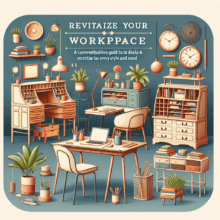Lighting is an often-underappreciated yet integral part of interior design. It serves both functional and aesthetic purposes, setting the mood of a space while providing necessary illumination. In this guide, we will explore the various types of light fixtures and sconces, their applications, and how they can transform your home or workspace. In addition, we will address common questions, provide useful resources, and offer case studies demonstrating the effective use of different lighting solutions.
1. Understanding Lighting Fixtures
1.1. What are Lighting Fixtures?
Lighting fixtures are devices that hold light bulbs and distribute their light across a designated area. They vary in style, functionality, and construction material, making them a fundamental element in establishing the atmosphere of a space. Common types of fixtures include chandeliers, pendant lights, floor lamps, table lamps, and wall sconces.
1.2. Types of Lighting Fixtures
- Ceiling Fixtures: Mount directly to the ceiling and come in various styles from flush mounts to elaborate chandeliers.
- Wall Sconces: Attached to walls, these fixtures can be used for both decorative and functional purposes.
- Table and Floor Lamps: Portable and versatile, they can be moved easily to suit changing needs and spaces.
- Pendant Lights: Hang from the ceiling and often utilized in kitchens, dining areas, or entryways.
2. The Role of Sconces in Interior Design
2.1. Historical Context
Sconces have a rich history that dates back to ancient civilizations, where they were used as torch holders. Over time, their design has evolved, reflecting various artistic movements, from Gothic to Modernism. Today, sconces are used not only for lighting but also as essential elements of decor.
2.2. Functional Benefits
Wall sconces serve numerous functions, including:
- Ambient Lighting: Provide general illumination in a room.
- Task Lighting: Designated areas for reading or working.
- Accent Lighting: Highlight artwork or architectural features.
2.3. Aesthetic Impact
In addition to functionality, sconces contribute significantly to the overall style of a space. The choice of materials, form, and design can create a specific mood or complement existing decor themes. For instance, ornate sconces can enhance a traditional aesthetic, while sleek designs fit modern sensibilities.
3. Selecting the Right Fixture for Your Space
3.1. Consider Your Lighting Needs
Before selecting a lighting fixture, assess the function of the space. Is it meant for relaxation, work, or entertainment? Understanding the primary use of an area will determine the type and intensity of light required.
3.2. Scale and Proportion
The size of the fixture is paramount. A large, bold chandelier may overwhelm a small room, while miniature sconces may get lost in a grand hallway. Consider scale when choosing fixtures to maintain visual balance.
3.3. Style and Theme
Choosing a fixture that aligns with your overall design theme is crucial. For example, a vintage-inspired sconce can add charm to a rustic-themed room, while a minimalist LED fixture can enhance a contemporary space.
3.4. Energy Efficiency
With the increasing emphasis on sustainability, consider energy-efficient lighting solutions, such as LED fixtures that offer lower energy consumption and longer lifespans compared to traditional incandescent bulbs.
4. Installation and Maintenance of Fixtures and Sconces
4.1. Installation Methods
Proper installation is crucial for the functionality and safety of light fixtures. Here are common installation methods:
- Hardwired: Most permanent fixtures are wired directly into the electrical system of a home. This often requires professional installation.
- Plug-in: These fixtures can be plugged into standard outlets and are easier to install, providing flexibility in placement.
4.2. Maintaining Your Lighting Fixtures
Regular maintenance ensures your fixtures remain functional and aesthetically pleasing:
- Cleaning: Dust and grime can accumulate; clean with appropriate materials often.
- Bulb Replacement: Monitor the lifespan of your bulbs, as they will dim or burn out over time.
5. Real-Life Applications: Case Studies
5.1. Residential Spaces
Consider the case of a contemporary home in an urban setting that utilized sconces for both functional and decorative purposes. The residents installed adjustable sconces on either side of a statement piece of art in the living room, making the artwork the centerpiece while providing adequate light for evening gatherings.
5.2. Commercial Spaces
A café successfully implemented pendant fixtures above their tables, creating a cozy atmosphere while enhancing the dining experience. The warm, dimmable bulbs provided a comfortable ambiance for their clientele.
6. Future Trends in Lighting Fixtures and Sconces
6.1. Smart Lighting Solutions
The trend toward smart homes is influencing lighting design significantly. Smart sconces and fixtures allow users to control lighting remotely and set schedules or adjust brightness using smartphone apps or voice commands.
6.2. Sustainable Materials and Designs
There is an increasing demand for fixtures made from sustainable materials, including recycled metals and organic shapes that minimize resource usage. This trend aligns with broader sustainability movements, increasing the importance of eco-friendly choices in lighting.
6.3. Personalization and Customization
Consumers are seeking more personalized lighting options. Companies are beginning to offer custom designs and configurations to meet the unique demands of individual customers, reflecting personal tastes and styles.
7. Q&A Section
7.1. Common Inquiries
If you have questions regarding your lighting choices, check out these frequently asked questions:
- What is the best type of lighting for small spaces? Ambient lighting paired with accent lighting works well. Opt for wall sconces to maximize floor space.
- How can I make a room feel larger with lighting? Use light colors and strategically placed fixtures to create depth and highlight open spaces.
- Are LED lights worth the investment? Yes, although they may cost more upfront, their longevity and energy savings make them cost-effective long-term.
8. Resources
| Source | Description | Link |
|---|---|---|
| American Lighting Association | Provides educational resources related to lighting professionals and consumers. | Visit Site |
| Energy Star | A government-backed program helping to promote energy-efficient products. | Visit Site |
| Houzz | A platform offering design ideas, including lighting inspiration. | Visit Site |
Conclusion
Lighting fixtures and sconces are more than mere sources of illumination; they are vital design elements that can dramatically change the dynamics of a room. Whether you’re looking to add functionality, aesthetic appeal, or create an entirely new atmosphere, understanding the nuances in lighting design is crucial. Given the trend towards smarter, more sustainable lighting solutions, the future of lighting looks bright—with innovations catering to diverse preferences, forms, and features.
Disclaimer
This article is produced by A.I. The information contained in this article is intended for informational purposes only and should not be construed as professional advice. Always consult with a qualified electrician or lighting designer when making decisions regarding fixtures and sconces for your specific needs.






